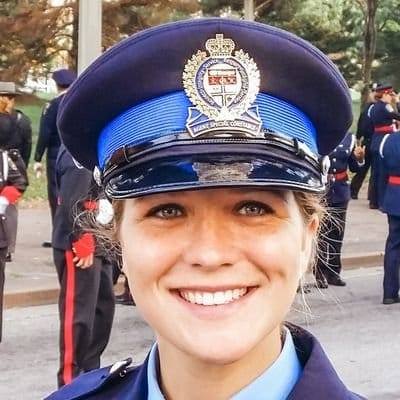
In a recent episode of Blue Line, The Podcast, editor Brittani Schroeder was joined by Ontario Special Constable Association President Sarah Kennedy to talk about the changes the OSCA is advocating for in the new CSPA, and about the challenges special constables face while on duty.
Q: Can you tell us about how special constables are represented in the new Community Safety and Policing Act?
In the Police Services Act of 1990, special constables (SCs) were basically a one-liner. In that one line, SCs were not well defined, so it created an ambiguous existence for us. However, under the Criminal Code, we are peace officers with the same authorities as police officers to carry out our duties, which sometimes means removing the rights and freedoms of citizens.
With the new Community Safety and Policing Act (CSPA) mandate, we really want to see the roles of SCs modernized, professionalized and standardized. We are so thrilled that in this new act, there are many sections that are dedicated to SCs; there are standards as to who can employ SCs, hiring standards, training regulations, a code of conduct for SCs which will enhance accountability, regulations that outline what we can do with what tools and with what authorities, and more.
The OSCA and SCs have been advocating for this model, this approach to standardizing and regulating SCs, for years. Now it’s just about getting the right content into the CSPA as its finalized.
Q: Can you speak to some of the regulations you’d like to see in place in more detail?
All of our requests, made to the Ministry of the Solicitor General, are rooted in the same principles, which are: enhanced accountability, public safety and officer safety.
The first thing we’re asking for is a standard uniform across Ontario. There’s a worldwide trend of law enforcement moving to a darker appearance in uniform; there have been multiple studies on this, including a study done by the RCMP and Carleton University, showing that the public perceives an officer in a darker uniform to be more professional, approachable, trustworthy and competent. The same went for an officer wearing a uniform with a stripe down the pants. So, the colour of the uniform is important for officer presence. When the public can recognize us easily because all SCs wear the same uniform, it creates less negotiation of our authority, which means less conflict overall.
The next request concerns our equipment. Currently, SCs throughout Ontario carry some version of pepper spray—either in foam, gel or spray form, a baton and handcuffs. We are not authorized to carry lethal force, such as firearms. What we are seeking is that some SCs be authorized to carry CEWs (conducted energy weapons), which are tasers. The select group of SCs would be at the discretion of the local police chief and police services board responsible for those of SCs.
People and situations are unpredictable and fluid. The taser is a much better option than the baton because they don’t cause permanent damage, whereas a baton is meant to break whatever it hits. Tasers are modern and have accountability built right into them. As soon as that tool is taken out of its holster, it can be paired with a body camera so that a live feed is immediately streamed to and recorded on the boss’s computer. Additionally, there’s a geolocation stamp generated. When a taser is drawn, 80 to 90 per cent of the time the suspect exhibits compliance right away, which means there is less injuries to the public and to officers.
Like I said at the outset, the crux of every one of our positions is public safety, officer safety and doing our job properly. And being able to better serve our public safety partners as well.
The final request is regarding the issue of not being able to get to each other or to get to our calls in a timely fashion. We need the Ministry of Transportation to adjust the Highway Traffic Act to allow for exemptions—the same exemptions that police, paramedics and fire services have to be able to disobey posted speed signs, have lights and sirens, and perhaps go through an intersection or a red light. We are not performing policing functions, like responding to gun calls or doing drug raids, but we are sometimes responding to crimes in progress. It can still take us forever to get to a call. I think that when somebody is fighting for their life, if they’re having a medical event, they don’t care who gets to them first. So, for the sake of that, and for the sake of being able to back each other up, we really need to be able to have the use of lights and sirens. Currently in the CSPA, there is a regulation governing vehicles that is prohibiting a SC vehicle from being equipped with red and blue lights and sirens. And this is part of what we’re asking to change.
Q: What is most important to you?
As president of the OSCA, I want to advocate for these changes, while these policies and regulations are still being formed. I want them to be done right the first time, before one of us is badly injured, or worse happens. Sadly, it’s inevitable, so we need to do it now.
Editor’s Note: This interview has been condensed and edited for clarity. To listen to the full episode, visit blueline.ca/podcasts.
Print this page
 Photo credit: Sarah Kennedy
Photo credit: Sarah Kennedy